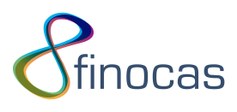OCAS Endowed Chair
N.V. Ocas, supported here by FINOCAS, in 2010 put forward the idea of establishing an Ocas Endowed Chair. At the time, the initiative was proposed in the context of the reorganisation and further expansion in materials research at the Technology park in Zwijnaarde, alongside the development of the Ghent Materials Research Cluster and the launch of SIM (Strategic Initiative Materials) in the new buildings inaugurated in 2011.
After careful consideration, it was decided that the Endowed Chair should focus on a theme, encompassing research and education in the field of Computational Materials Science.
Objectives
Computational Materials Science has undergone a real boom over the last decade. Historically speaking, there are two extremely distinct approaches to research and product development in the materials industry:
- Research with a focus on physical modelling of products and their manufacturing process;
- and, research with a more experimental approach to product development, often underpinned by a thorough statistical analysis of production data.
Both methods have inherent shortcomings. With physical modelling, one fairly quickly comes up against the lack of accurate physical data to input into the models, especially in the case of microstructure. Experimental research combined with statistical analysis also has an inherently limited validation area making extrapolation difficult.
Both methods focus on understanding the PSPP (Process-Structure-Properties-Performance) relations of a particular material. Over the last decade, it has become evident that it is only possible to answer questions within product development by using a combination of methods. This technique, commonly known as “Integrated Computational Materials Engineering” (ICME), makes use of techniques on different levels ranging from the atomic, as in DFT calculations on microscopic physical and thermodynamic models , to macroscopic finite element analyses in order to gain a better understanding of mechanical material behaviour. The integration of different models, followed by experimental validation, has led to a great number of breakthroughs within materials science, such as materials for batteries, catalysts, and new alloys for use at high temperatures, for example. It has also been shown that this can lead to a significant reduction in a new product’s time-to-market.
Donor
Period
2013-Present
Supervisor
Chair-holder
Prof. Stefaan Cottenier
(Continuously since 2011)
